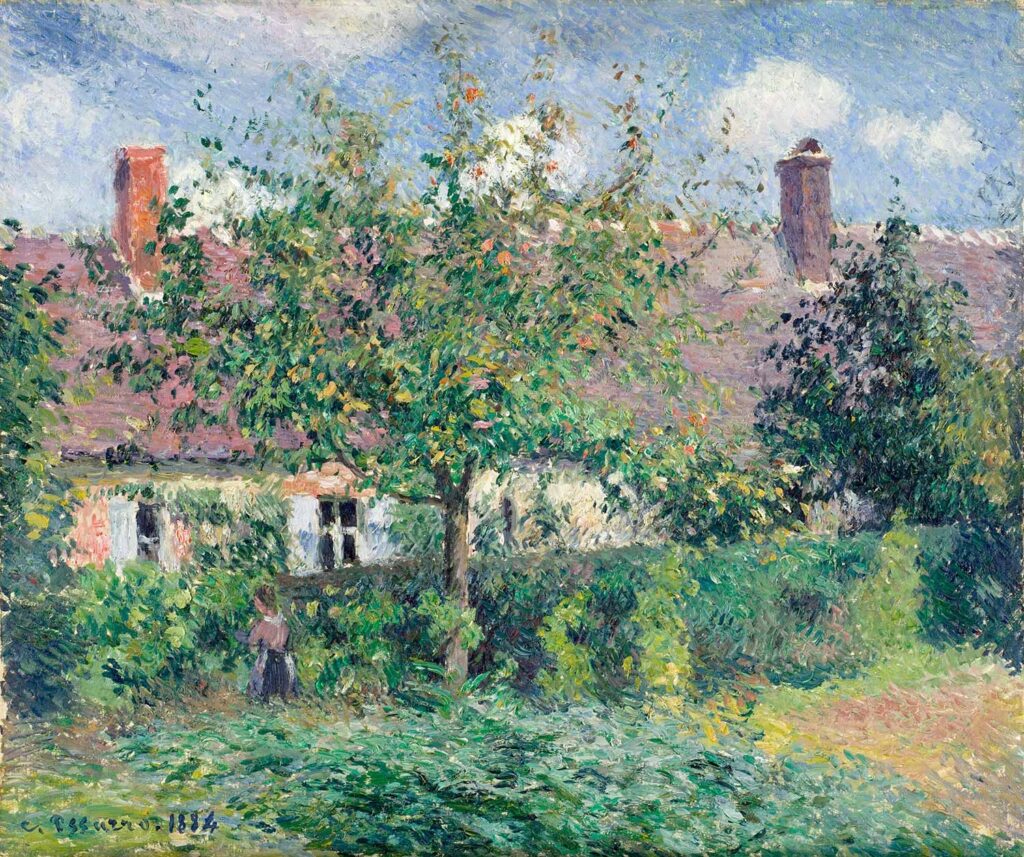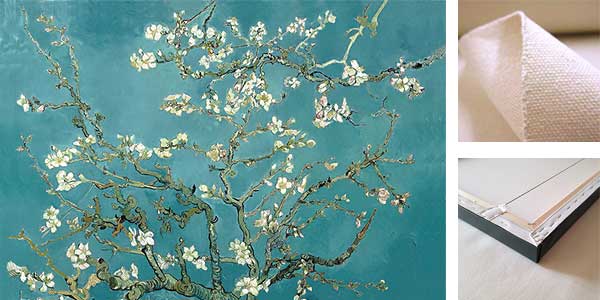
Peasant House at Éragny by Camille Pissarro was created in 1884. The painting is in Los Angeles County Museum of Art. The size of the work 46 x 55 cm and is made of oil on canvas.
Camille Pissarro achieved his greatest success by capturing the ethereal effects of the outdoors, as in The Path to Les Pouilleux, Pontoise, Peasant House at Éragny (to the left), and Snowy Landscape at South Norwood (to the right). With skillful brushstrokes, which are increasingly layered in the two later paintings, Pissarro created glittering surfaces that reflect the changing qualities of the skies, foliage, and fields.
Although ethnically and politically an outsider (Pissarro, an atheist and self-described anarchist, was born to a Jewish family on the Caribbean island of St. Thomas, formerly a Danish colony), he was never theless a central figure in the Impressionist narrative… Read more in Los Angeles County Museum of Art
About the Artist
Jacob Abraham Camille Pissarro (10 July 1830 – 13 November 1903) was a Danish-French Impressionist and Neo-Impressionist painter born on the island of St Thomas (now in the US Virgin Islands, but then in the Danish West Indies). His importance resides in his contributions to both Impressionism and Post-Impressionism. Pissarro studied from great forerunners, including Gustave Courbet and Jean-Baptiste-Camille Corot. He later studied and worked alongside Georges Seurat and Paul Signac when he took on the Neo-Impressionist style at the age of 54.
In 1873 he helped establish a collective society of fifteen aspiring artists, becoming the “pivotal” figure in holding the group together and encouraging the other members. Art historian John Rewald called Pissarro the “dean of the Impressionist painters”, not only because he was the oldest of the group, but also “by virtue of his wisdom and his balanced, kind, and warmhearted personality”. Paul Cézanne said “he was a father for me. A man to consult and a little like the good Lord”, and he was also one of Paul Gauguin’s masters. Pierre-Auguste Renoir referred to his work as “revolutionary”, through his artistic portrayals of the “common man”, as Pissarro insisted on painting individuals in natural settings without “artifice or grandeur”. Read more in Wikipedia
Order a reproduction of this work (printed on canvas)
